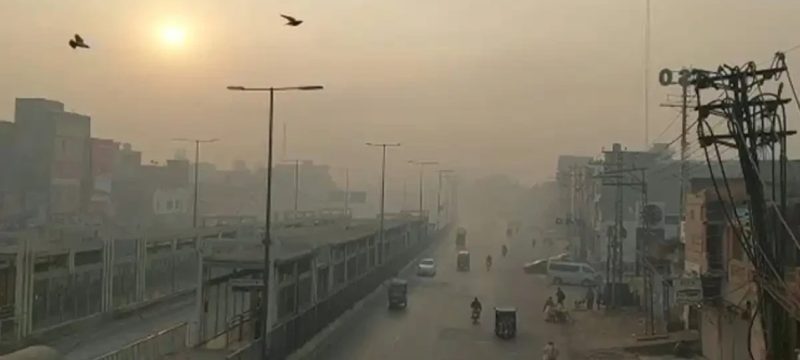Lahore’s air quality has reached alarming levels, with the city recording an Air Quality Index (AQI) of 1067, far exceeding safe limits. International air monitors have reported that some areas in Lahore are experiencing AQI levels as high as 1853 in Defence Phase 8, making the city’s atmosphere dangerously toxic. In comparison, Askari 10 registered 1720, and Defence Phase 5 recorded 1429, while Mall Road and Gulberg, two of the city’s key areas, saw AQI levels of 1337 and 1312, respectively.
The current pollution levels are nearly 122 times higher than the World Health Organization’s (WHO) recommended air quality standards, posing severe health risks. Experts are warning that prolonged exposure to such toxic air can cause significant respiratory complications, particularly for individuals with pre-existing conditions like asthma or heart issues. Medical professionals are advising citizens to limit outdoor activities and use protective masks when venturing outside.
Also Read: Emergency Alert Issued in Lahore as Smog Chokes City’s Environment
In response to this escalating crisis, the Punjab government has introduced a ‘green lockdown’ in Lahore’s Shimla Pahari and adjacent areas. This initiative, part of the chief minister’s multi-sectoral anti-smog plan, involves spraying water mixed with disinfectants in highly affected areas such as Abbott Road, Gulistan Chowk, Haji Camp, and Empress Road to settle dust particles. A dedicated hotline (1373) has been established for residents to report severe pollution incidents.
Authorities are also addressing traffic congestion, clearing encroachments, and planting saplings in an effort to curb emissions. The plan further encourages carpooling, restricts parking in congested areas, and monitors the emissions from generators in government buildings. These steps are designed to mitigate the smog crisis and provide some relief from the hazardous air quality in the city.





